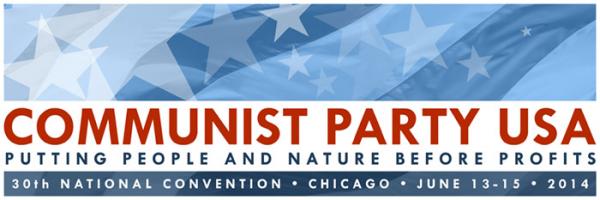
Submitted by Michelle Kern, Northern California
An organizer faced today with an array of social media tolls might ask themselves-what good does this do me? Why should I be on Facebook or Twitter?
In the first place, there is no substitute for face-to-face organizing. However, social media can serve a powerful role in connecting with workers, organizations and hard-to-reach demographics. Here are just a few examples of the way social media can be used successfully:
-
In the 2012 elections, the California Labor Council used social media to reach young voters to get their support. The labor-related propositions, Prop 30 and Prop 32 were not polling well. Young voters largely do not watch political TV spots and rarely listen to mainstream radio. Unions switched to social media to target this demographic, and increased support among young voters from 40% to 60%.
-
The runaway popularity of the OURWalmart Black Friday campaign was due in large part to online organizing which “turned the internet into a shop floor” for workers and organizers. 1500 protests across the nation were largely planned online, and social media was used to get the word out to supporters.
-
Dancer’s Alliance, an organization for music, video and music-tour dancers, created fresh and attractive member-driven online campaigns designed to reach workers that rarely see each other, providing ways for them to connect and share pieces online to get out the word for their “Time Is Now” campaigns for union contracts. As a result, dancers won contracts for both music videos and music tours.
-
The Chicago Teachers Union successfully used social media to win the public relations battle in their strike of 2012. Individual members shared images and video created to pass along to friends and allies on Facebook and Twitter, which aided in turning the narrative away from the one created by corporate media.
According to Labor Start’s 2012 survey of international trade union usage of social media, 88% of union members use Facebook and 37% use Twitter. Most national unions have a social media presence and use it to engage the public about ongoing issues and campaigns.
The results of the Pew survey of internet users found that 90% of young people in the UK are on some form of social media. The numbers are the same for the US, with 73% of all adults on social media, especially Facebook, which still dominates. The number of older people going online to social media sites is also growing, albeit at a slower pace.
Even if you simply start with modest efforts – it is worth taking advantage of free social media tools to share CPUSA and People’s World material with your circle of trade union allies, who are already in the habit of sharing materials from their own organizations.
Whether you are working solo, or using social media for your organization, club or union, here are some tips for getting out your message:
The first goal for any organization is to conduct an internal survey to determine which social media are already employed by the organization’s current, and potential, audience. Several demographics use different forms of communication more often than others, for example young people tend to communicate using phone texting more than email. It is far more effective to reach your audience where they already are then to try to pull people toward the media channel they may not be comfortable with or use often.
Understanding the difference in how various online tools are employed by new users should be the next goal. A website presence is an organization’s “front door.” Users discover this presence in an Internet search, ascertaining basic information. Others interested in greater detail will make the effort to seek out the organization’s extended presence in social media, which should be accessible from the organization’s website.
On the other hand, if community building and dialogue are an organizational goal, a Facebook page will be key for users to seek out updated information on news or to participate in building community with other users. Facebook is the social media platform that reaches the widest demographic of users; however new users face a high learning curve when facing the many tools it employs. Make sure that this platform is already popular with a potential user base.
Content, and how it is delivered, are also factors to consider when choosing a social media channel. Platforms like Twitter, Tumblr, and Instagram that specialize in smaller bursts of information can attract new readers, but must be refreshed at shorter intervals, as feeds can drift by quickly and change hour by hour. If an organization is using these channels to support a blog or a newsletter, it can be a challenge to find ways of presenting this information so it stays fresh and reaches new users.
Organizations using these micro-blogging platforms need to keep an eye out for opportunities to build new relationships with other users and organizations. Find an event related to the work the organization is engaged in and create messages that link events, happenings, tweet-chats, etc. to existing content. Search out and use hashtags (words with a # symbol placed in front of them that create links on social media) created for events to direct your content into streams where people will be searching for content related to the event or issue
The AFL-CIO advises “It is important not to over-rely on media/social media alone. All communications efforts should be part of a larger strategic plan that includes online, offline, mobile, traditional media and grassroots outreach.”
What people in the Party can do: support our social media sites, national and regional. Use them to share items from the People’s World. Become part of the sharing collective. Members can tag (in Twitter and on Facebook) the member organizations that might be interested in the contents of an article, this will make it more likely to get more interaction.
Interact with articles and posts shared on state and club social media, even if you’ve read or shared them before. This is raise the chances of more people seeing material-especially since Facebook has “throttled” its service to favor organizations that pay for advertising. Social media should be a weekly part of activist activity.
Support the social media campaigns by labor, they will often reciprocate and follow your page or twitter feed. Interactions like this can pave the way to new relationships in face to face organizing.
(Portions of this article were published in a different form in The Advocate, Nov. 2013)
The views and opinions expressed in the Convention Discussion are those of the author alone. The Communist Party is publishing these views as a service to encourage discussion and debate. Those views do not necessarily reflect the views of the Communist Party, its leading bodies or staff members. The CPUSA Constitution, Program, and all its existing policies remain in effect during the Convention discussion period and during the Convention.
For details about the convention, visit the Convention homepage
To contribute to the discussion, visit the Convention Discussion webpage
CONVENTION DISCUSSION
30th National Convention, Communist Party USA
Chicago | June 13-15, 2014


 Join Now
Join Now